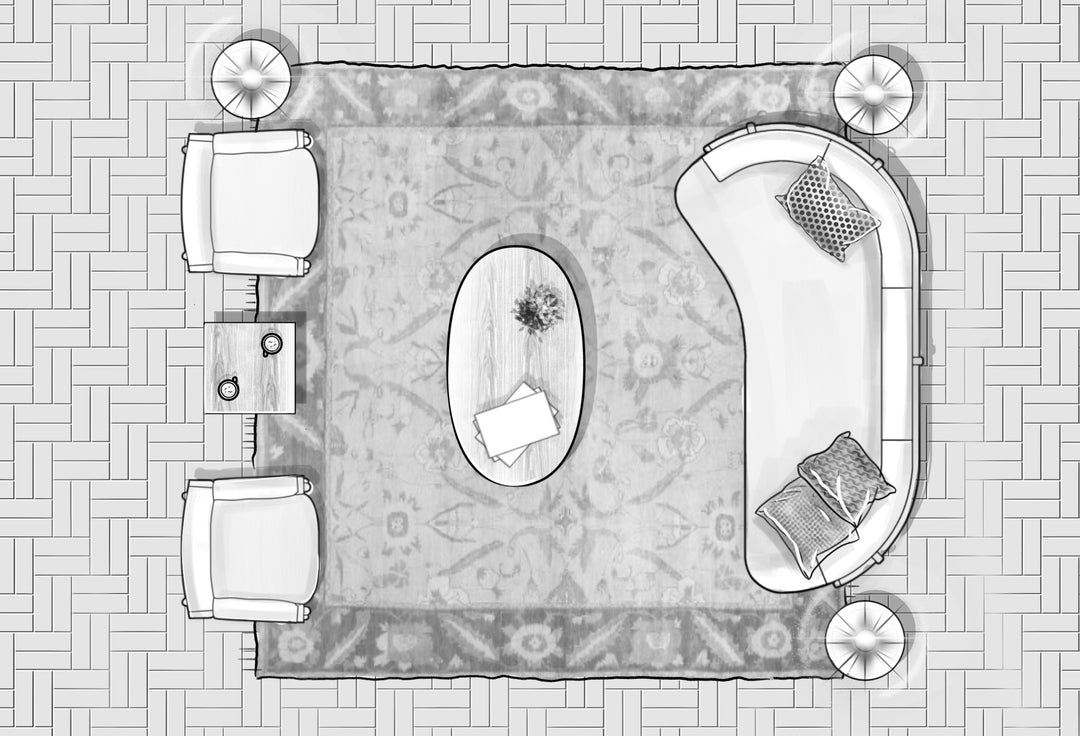Unraveling History: The First Use of a Rug
Sign up today and we'll send you a 10% discount code towards your first purchase.
In the tapestry of human history, the humble rug holds a thread of significance that stretches back millennia. From its earliest inception to its evolution into an art form cherished for both its functionality and beauty, the journey of the rug is a fascinating narrative that traverses cultures and civilisations. Let's embark on a journey to uncover the origins of the rug and explore its first known use in history.
The Ancient Roots of Rug Making: The origins of rug making can be traced back to ancient civilisations that flourished in regions such as Mesopotamia, Egypt, and Central Asia. Early humans, seeking warmth and comfort in their dwellings, ingeniously crafted rudimentary floor coverings using materials readily available in their environment. These primitive rugs, woven from reeds, grasses, and animal hides, served a practical purpose, providing insulation from the cold ground and offering a soft surface for sitting or sleeping.
The Emergence of Textile Weaving: As human civilisation advanced, so too did the art of weaving. The invention of the loom revolutionised textile production, allowing for the creation of more intricate and durable fabrics. In ancient Mesopotamia, dating back to around 4000 BCE, archaeologists have unearthed evidence of early textile fragments, suggesting that the weaving of fibres into textiles was already a well-established craft.
The Birth of the Rug: While the precise moment of the rug's inception remains shrouded in the mists of time, historians believe that the transition from simple floor coverings to what we now recognise as rugs occurred in ancient Persia (modern-day Iran). The Persians, renowned for their mastery of textile arts, elevated rug making to a form of high art, weaving intricate patterns and designs into their creations. These early Persian rugs, known for their exquisite craftsmanship and luxurious materials, were prized possessions coveted by nobility and royalty.
The Oldest Known Rug: The oldest known example of a rug dates back to the 5th century BCE and was discovered in a burial site in Siberia. Known as the Pazyryk Carpet, this remarkably well-preserved rug features a symmetrical knot structure and intricate motifs reminiscent of Persian design. Its discovery provides valuable insight into the ancient origins of rug making and underscores the cultural significance of textiles in ancient societies.
Images: the original Pazyryk carpet, our PAZYRYK design rug at Lilla Rugs
The Legacy of the Rug: From the ancient civilisations of the Near East to the majestic courts of Europe, the rug has transcended time and geography, leaving an indelible mark on human history. As a symbol of comfort, prestige, and artistic expression, rugs continue to adorn homes, palaces, and museums around the world, serving as tangible links to our shared cultural heritage.
The first use of a rug in history represents a pivotal moment in the evolution of human civilisation. What began as a simple necessity for warmth and comfort has blossomed into a cherished art form celebrated for its beauty and craftsmanship. As we unravel the mysteries of the rug's origins, we gain a deeper appreciation for its enduring legacy and the profound impact it has had on the tapestry of human history.

We are located in North West London, our family owned warehouse. Pop along to see over 10,000 rugs in person!

Let us help you figure out how best to measure for your new rug.

